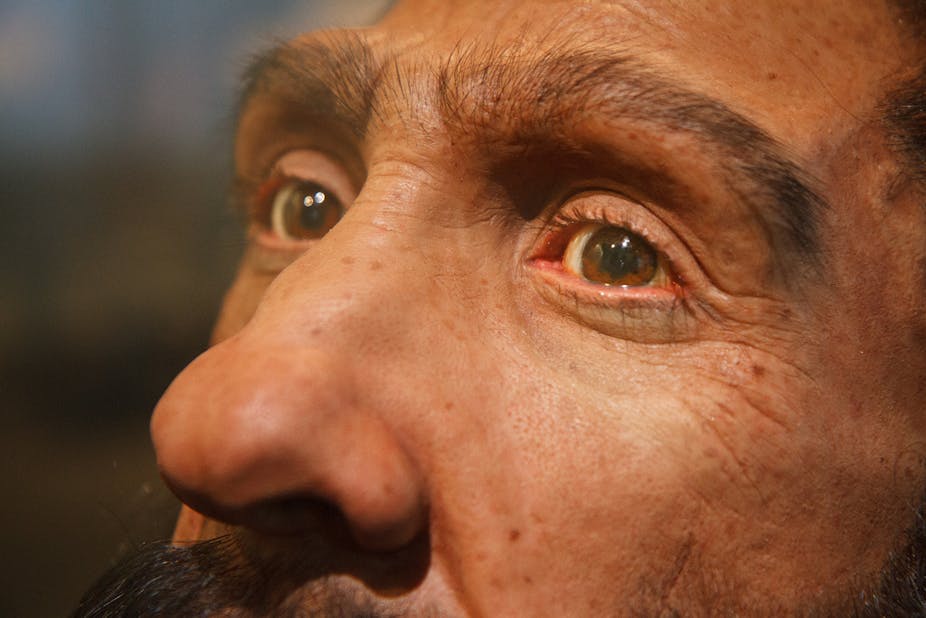Many theories have been proposed for the evolution of dark skin pigmentation – and a new paper revives one of the oldest: that skin cancer was a more potent selective force for the evolution of protective dark pigmentation than other factors in humans.
The study, authored by cell biologist Mel Greaves and published in Proceedings of the Royal Society B: Biological Sciences, claims this is because lightly pigmented, naked-skinned human ancestors living under strong African sun would have suffered extraordinarily high rates of serious and sometimes fatal skin cancer. This, he said, would have given an evolutionary advantage to those who were darker skinned.
Greaves bases his argument on two suppositions: that ancestral hominins (ancient human ancestors) had naked and pale or “white” skin, and that people with albinism living in Africa today provide a good model for skin cancer risk of early hominins (because they develop lethal skin cancer in their 20s, early enough to affect reproduction). Both of these suppositions are wrong.
Albinism wasn’t a condition of early man
Our research and that of other teams of scientists, based on genetic and comparative anatomical evidence, indicates that the last common ancestor of chimpanzees and humans almost certainly had skin that looked like that of chimpanzees. It was lightly pigmented and mostly covered with dark hair. Importantly though, the naked areas of skin on the face and hands could become dark through tanning after sun exposure because the skin contained active melanin-producing cells.

There is an important distinction in skin cancer risk between lightly pigmented naked skin that is capable of tanning and pale naked skin that is incapable of tanning because of an inability to produce protective pigment. The former condition typifies most non-human primates and carries a negligible risk of skin cancer, while the latter characterises people suffering from albinism and is associated with elevated risks of premature serious skin cancers.
Early hominins never had skin that was like that of modern people with albinism, and they never experienced the high rates and early onset of serious skin cancers that people with albinism do.
When making hypotheses about mechanisms of evolutionary change, it is important to choose the right model.
If not skin cancer, what?
If skin cancer was not the most important selective force in the evolution of dark pigmentation then what was? Dark pigmentation in the skin is caused by a pigment called eumelanin, often referred to simply as melanin. Eumelanin is a remarkably effective natural sunscreen and – in the course of human evolution – we evolved permanently darkly pigmented, mostly naked skin more than one million years ago. And the process by which these changes occurred is now better understood as the result of advances in genetics, physiology, and paleoecology.
We probably lost most of our hair because of the need to keep our bodies cool through sweating and, in the course of the transition from hairiness to hairlessness, we gradually acquired more protective dark pigmentation on exposed skin. The dark pigmentation protected us against ultraviolet radiation (UVR), which causes a lot of damage when it impinges on skin.
UVR damages DNA in skin cells and breaks down one of the body’s most important vitamins, folate, which circulates in the small blood vessels of the skin. Folate is a B vitamin (B9, folic acid) that is needed for many tasks in the body including the production and repair of DNA. We get folate from leafy green vegetables, citrus fruits and whole grains, and when we are deficient in folate, serious problems, from inadequate DNA production and cell division, can occur.
Folate deficiencies can manifest themselves quickly and when they affect women in early pregnancy they can lead to serious birth defects caused by faulty development of the embryonic nervous system. This is why women who are considering getting pregnant are urged to eat healthy diets with lots of greens, to take folate supplements and to avoid alcohol, which lowers folate levels.
Because UVR-rich sunlight also leads to lower folate levels, we implicated this as a major selective force for the evolution of protective dark pigmentation.
Evolution works by affecting reproductive success. The evolution of permanent dark pigmentation in the skin was an easy and highly effective way to increase our fertility under conditions of strong UVR. When hominins dispersed to regions with lower UVR levels, mostly outside of Africa and at various times, their skin pigmentation changed too. Reducing the amount of natural sunscreen pigment in the skin made it possible to produce vitamin D in the skin more readily under less sunny conditions.
Skin pigmentation has come and gone a lot in the course of recent human evolution as we have moved into and out of sunny climes, and is now considered one of the most important and most visible traits of our bodies to have been shaped by natural selection. But there’s no evidence that this was driven by avoiding skin cancer.

